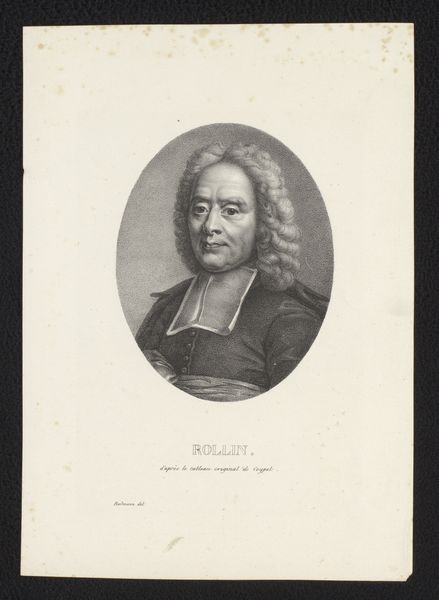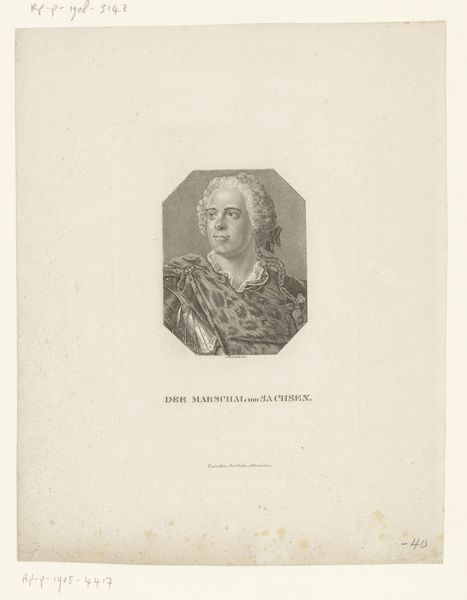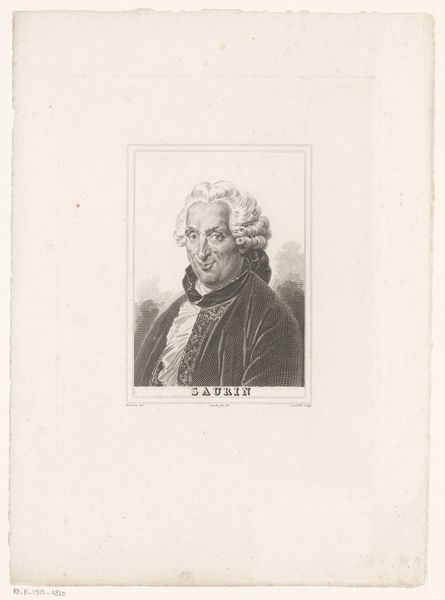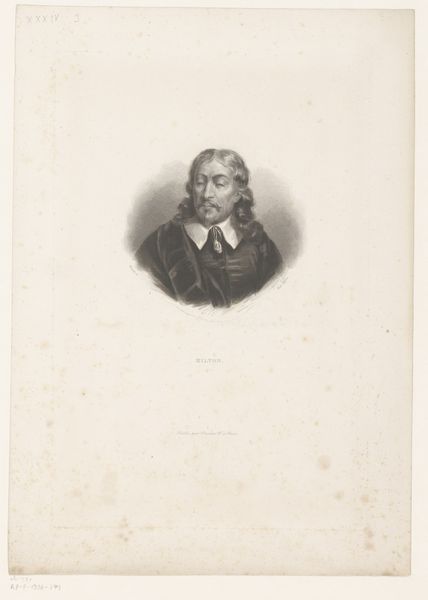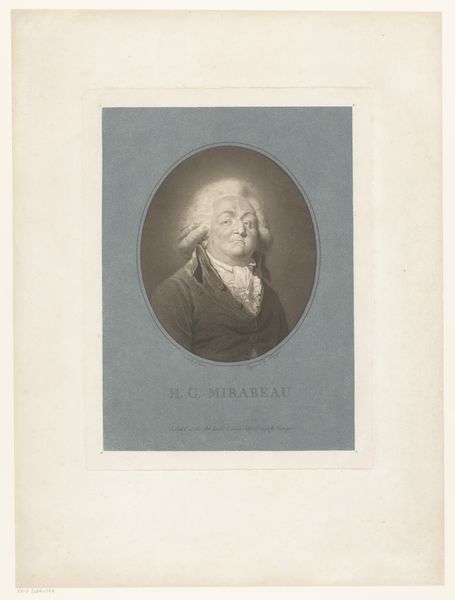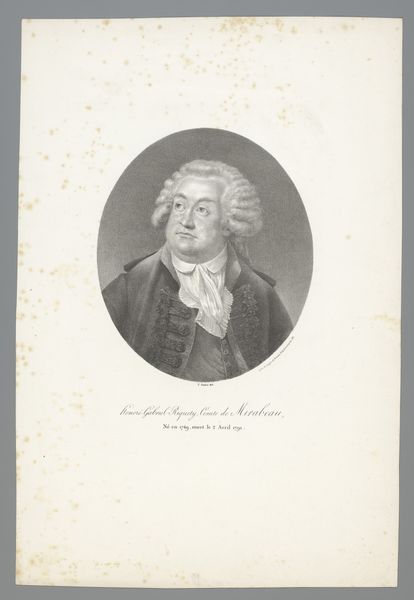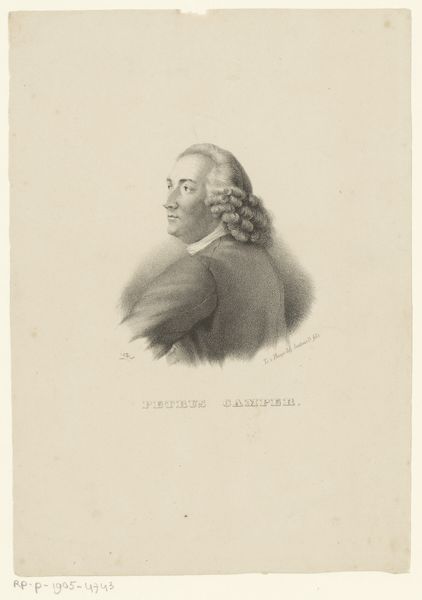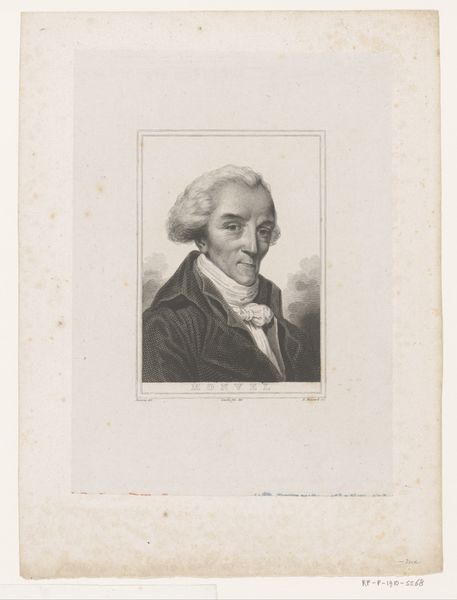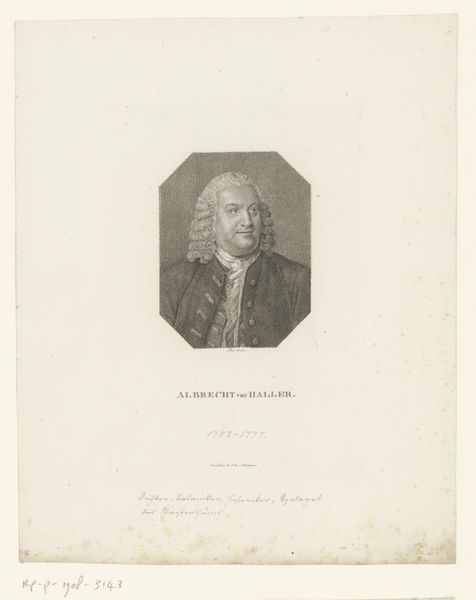
engraving
#
portrait
#
neoclacissism
#
aged paper
#
old engraving style
#
historical photography
#
history-painting
#
engraving
Dimensions: height 242 mm, width 174 mm
Copyright: Rijks Museum: Open Domain
Curator: Here we have a 19th-century engraving, "Portret van Honoré-Gabriel de Riqueti, comte de Mirabeau" by J. Rémon. What's your initial take on it? Editor: It has this aged quality, almost melancholic. The shading is meticulously done but gives off a somber feel. The composition seems rather conventional, centered and symmetrical. Curator: Indeed, that's typical of neoclassical portraiture, emphasizing reason and order. The engraver clearly wanted to convey Mirabeau's intellectual prowess, which, symbolically, would've associated him with stability in a turbulent time. Note the slight upward tilt of his chin—a pose struck by authority figures. Editor: But consider the labor involved. Each line meticulously etched, mass-produced for circulation. An interesting contradiction, right? The aristocracy being visually disseminated using newly accessible means of production, ultimately democratizing the image itself. How many of these were made and consumed at the time? Curator: That’s an astute observation! Mirabeau was, after all, a bridge between aristocracy and revolution, symbolized here through the tension between the traditional medium and its inherent accessibility. Notice his intense gaze: Rémon captured him mid-thought. His eyes project ambition, don't they? Editor: And the quality of the paper—look at how time has marked it. The material aging physically mirrors the aging of an idea, a concept of leadership itself. It raises questions about the role of image-making in constructing legacy and how materiality factors into how legacy degrades or evolves. Curator: Fascinating! His image, once representing power, becomes a fragment of history, marked by time, yet carrying symbolic weight through our own cultural interpretations. Editor: Absolutely. A humble engraving prompting larger considerations about representation, access, and the slow decay of both materials and meaning. Thank you for sharing it.
Comments
No comments
Be the first to comment and join the conversation on the ultimate creative platform.
